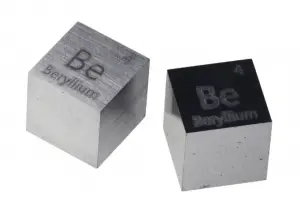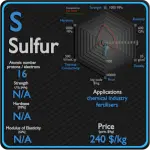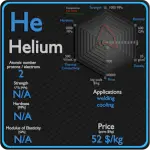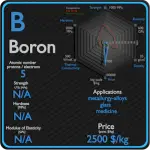This article contains comparison of key thermal and atomic properties of beryllium and oxygen, two comparable chemical elements from the periodic table. It also contains basic descriptions and applications of both elements. Beryllium vs Oxygen.

Beryllium and Oxygen- About Elements


Source: www.luciteria.com
Beryllium and Oxygen – Applications
Beryllium
Berylium can be utilized as alloying agent in production of beryllium-copper, X-ray detection diagnostics, manufacture of computer peripherals, in nuclear reactors as neutron moderators and reflectors. 80% of the beryllium used goes into copper beryllium alloys. The combination of light weight with high strength at extreme temperatures makes beryllium metal and aluminium beryllium alloys ideal for use in high performance aerospace applications such as components of rockets. Transparency to x-radiation makes pure beryllium metal essential in security equipment and high-resolution medical imaging technology, such as mammography to detect breast cancer. Copper beryllium is the hardest and strongest of any copper alloy (UTS up to 1,400 MPa), in the fully heat treated and cold worked condition. It combines high strength with non-magnetic and non-sparking qualities and it is similar in mechanical properties to many high strength alloy steels but, compared to steels, it has better corrosion resistance.
Oxygen
Common uses of oxygen include production of steel, plastics and textiles, brazing, welding and cutting of steels and other metals, rocket propellant, oxygen therapy, and life support systems in aircraft, submarines, spaceflight and diving. Smelting of iron ore into steel consumes 55% of commercially produced oxygen. In this process, oxygen is injected through a high-pressure lance into molten iron, which removes sulfur impurities and excess carbon as the respective oxides, sulfur dioxide and carbon dioxide. Uptake of oxygen from the air is the essential purpose of respiration, so oxygen supplementation is used in medicine. Treatment not only increases oxygen levels in the patient’s blood, but has the secondary effect of decreasing resistance to blood flow in many types of diseased lungs, easing work load on the heart.
Beryllium and Oxygen – Comparison in Table
| Element | Beryllium | Oxygen |
| Density | 1.848 g/cm3 | 0.00143 g/cm3 |
| Ultimate Tensile Strength | 345 MPa | N/A |
| Yield Strength | N/A | N/A |
| Young’s Modulus of Elasticity | 287 GPa | N/A |
| Mohs Scale | 5.5 | N/A |
| Brinell Hardness | 600 MPa | N/A |
| Vickers Hardness | 1670 MPa | N/A |
| Melting Point | 1278 °C | -218.4 °C |
| Boiling Point | 2469 °C | -183 °C |
| Thermal Conductivity | 200 W/mK | 0.02674 W/mK |
| Thermal Expansion Coefficient | 11.3 µm/mK | — µm/mK |
| Specific Heat | 1.82 J/g K | 0.92 J/g K |
| Heat of Fusion | 12.2 kJ/mol | (O2) 0.444 kJ/mol |
| Heat of Vaporization | 292.4 kJ/mol | (O2) 6.82 kJ/mol |

















